Sinhalisation in the East – Ilankaithurai
18 June 2020
After Sri Lankan President Gotabaya Rajapaksa established an all Sinhala task force, which includes Buddhist monks and alleged war criminals, to “preserve the historical heritage of Sri Lanka” in the Eastern province, we take a closer look at Sinhalisation efforts that have already taken place in the region.
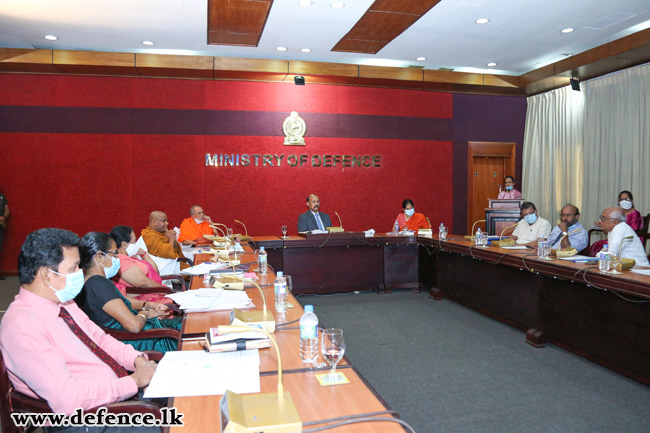
The Presidential Task Force at their inaugural meeting last week
The announcement last month stated that the role of the Archaeological Heritage Management is to:
- Identify sites of archaeological importance in the Eastern Province.
- Identify and implement an appropriate program for the management of archaeological heritage by conserving and restoring such identified sites and antiquities.
- Identify the extent of land that should be allocated for such archaeological sites and take necessary measures to allocate them properly and legally.
- Preserve the cultural value of sites of archaeological importance and promote the uniqueness of Sri Lanka, both locally and international, and make recommendations for the promotion of such heritages.
While Sinhalisation is not a new phenomenon in the North-East, there has been an influx in the “rediscoveries” of Sinhala Buddhist sites in predominantly Tamil and Muslim areas by Sri Lanka’s Department of Archaeology. There have been increasing concerns over the exploitation of archaeology as a justification for the expropriation of Tamil and Muslim land.
The United States 2019 Report on International Religious Freedom also highlighted that “the construction of Buddhist shrines by Buddhist groups and the military in the predominantly Hindu and Muslim Northern and Eastern Provinces constituted religious intimidation, as some shrines were built in areas with few if any, Buddhist residents”. “According to local politicians in the north, the military sometimes acted outside its official capacity and aided in the construction of Buddhist shrines. Reports published by various civil society groups indicated security forces continued to be involved in constructing Buddhist religious sites, citing archaeological links in places where there were no Buddhist populations,” the report added.
Efforts have already been underway in the North for several decades, but have also seen a recent intensification.
In 2018, a Sinhala Buddhist monk constructed a large Buddha statue encroaching on Neeraviyadi Pillaiyar Kovil in Semmalai and a Tamil language sign indicating the Hindu temple was destroyed and replaced with a Sinhala sign. Last year, the Mullaitivu Magistrate’s Court ruled in favour of the Neeraviyadi Pillaiyar, confirming its longstanding existence in Semmalai. Ignoring the court ruling, the Sri Lankan army set up a sham archaeological museum opposite the temple, claiming the artefacts were from the area and belonged to the disputed Buddhist vihara next to the temple, highlighting that Tamils are not even protected legally from this encroachment.
Not only are these “rediscoveries” of Buddhist sites an assault on the Tamil community’s ancestral ties to the North-East as their homeland, it is evident the unaccountable task force will expand Sinhalisation further under the guise of archaeology with military backing.
In this series, we look at sites across the East that have already been battling against state-sponsored Sinhalisation efforts.
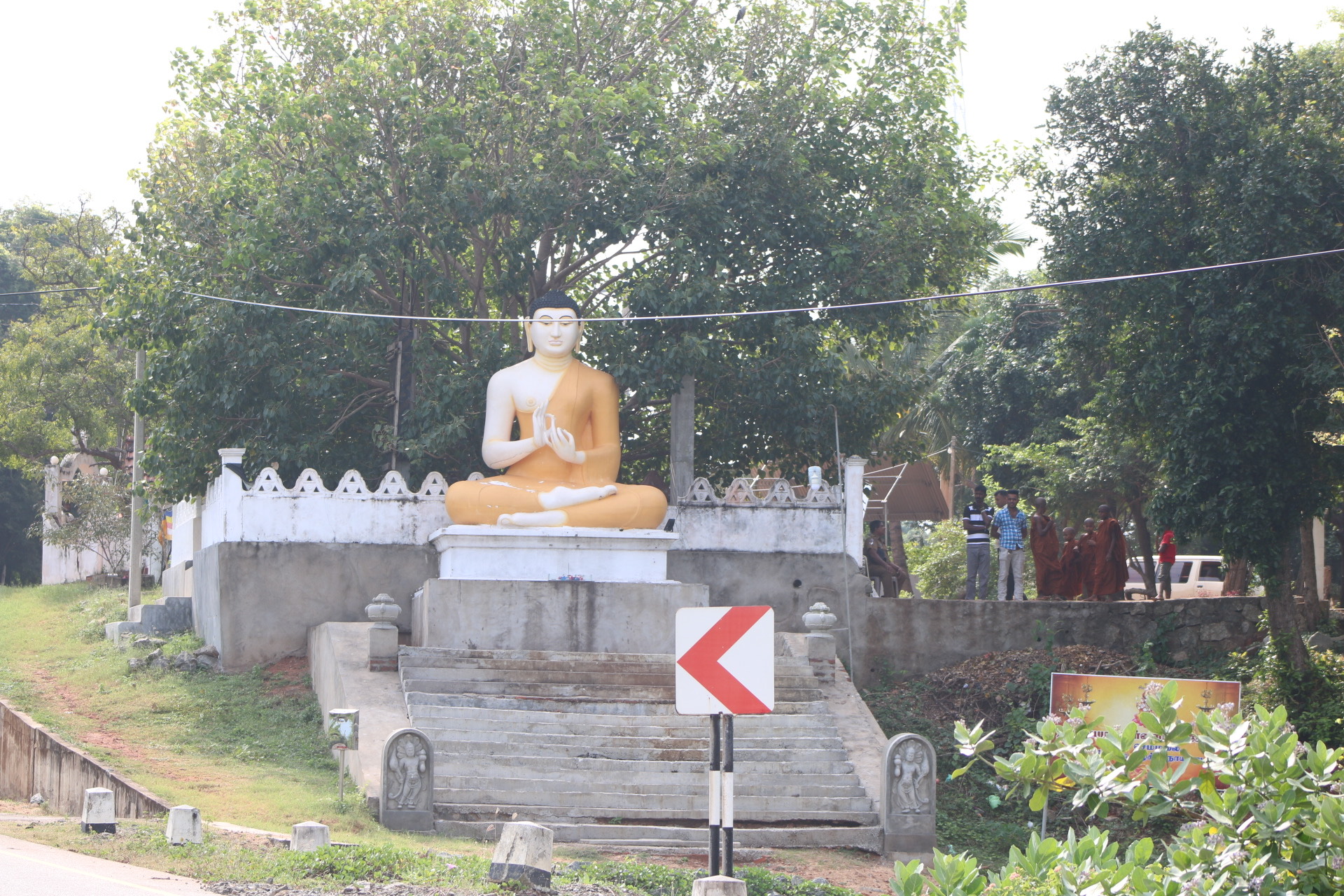
Ilankaithurai Muhaththuvaram
Verugal, an area known for its rich cultural history, is located in the Trincomalee district and in recent years has been the focus of intense Sinhalisation efforts – many of which have involved Sri Lanka’s archaeology department.
In the village of Ilankaithurai Muhaththuvaram, the local population was displaced due to the fighting in 2006. When the Sri Lankan army took over the area from the Liberation Tigers of Tamil Eelam (LTTE), Former Chief Justice Sarath Silva, was taken on a tour by the military where he ‘discovered’ the ‘Lanka Patuna Samudragiri Vihara’. This area was then “reclaimed” as a historic Buddhist site by the Department of Archaeology.
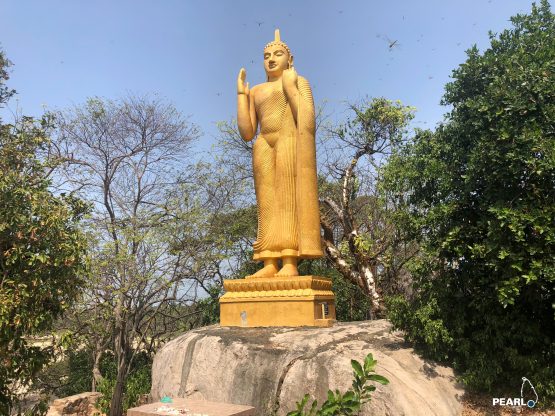
Photograph by PEARL
“When the villagers returned in 2008, they found several Hindu temples destroyed, including the Veddah’s traditional place of worship on the hill. A large Buddha statue, and a new temple, constructed by the army, was found in its place.” – PEARL report.
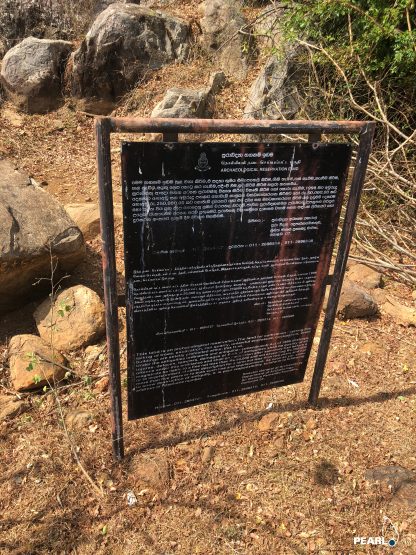
Photograph by PEARL
“The Archaeological Department’s sign is often the dreaded first indication that the government is about to take over land.” – PEARL report.
PEARL noted that Sri Lanka’s archaeology department had designated the area as a “historic Buddhist site”. In 2007, a Sri Lankan military commander officially declared open the Buddhist vihara and the village was also officially renamed to the Sinhala “Lanka Patuna”. The new Sinhala name now appears on official government documentation, including on both certificates.
Busloads of Sinhala Buddhist tourists reportedly flock to the newly established site, with a road bridge is built to link the shores across the strait.
Read more here: Sinhalisation of the North-East: Seruwila-Verugal
Read more here: From Ilankaithurai to Lanka Patuna
——————————————————————————————————————–
Sinhalisation in the East – Kallady
26 June 2020
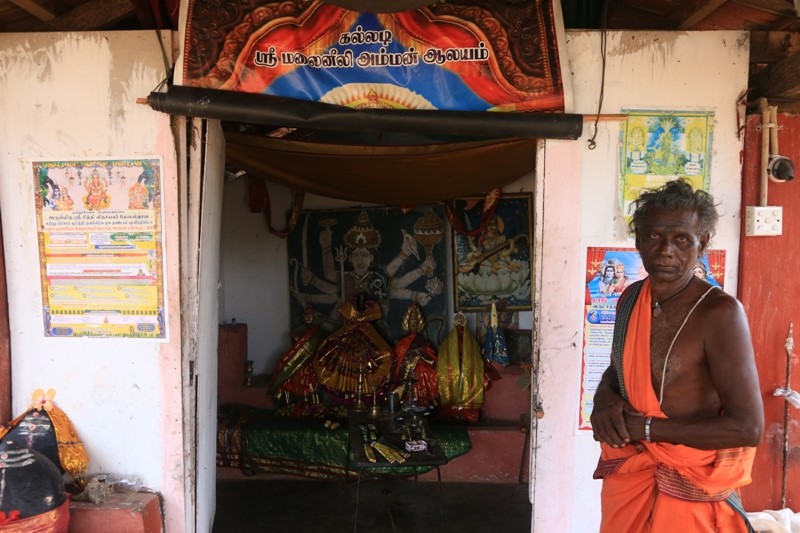
Photograph by @streetsoftamileelam
After Sri Lankan President Gotabaya Rajapaksa established an all Sinhala task force, which includes Buddhist monks and alleged war criminal to “preserve the historical heritage of Sri Lanka” in the Eastern province, we take a closer look at Sinhalisation efforts that have already taken place in the region.
While Sinhalisation is not a new phenomenon in the North-East, there has been an influx in the ‘rediscoveries’ of Sinhala Buddhist sites predominantly in Tamil and Muslim areas by Sri Lanka’s Department of Archaeology. There have been increasing concerns over the exploitation of archaeology as a justification for the expropriation of Tamil and Muslim land.
Kallady
The Malal Neeliyamman temple located on a hilltop in Kallady, a village south of Ilankaithurai, has been expropriated under the guise of ‘archaeology’ with backing from the Sri Lankan military and Buddhist monks. The ancient temple, belonging to Tamil people, was destroyed, and replaced by a Buddhist temple after the area was taken over by the military in 2006.

Department of Archaeology sign indicating that the government is taking over the land. Photograph by @streetsoftamileelam
The temple premises were used by the Liberation Tigers of Tamil Eelam (LTTE) to place a communications tower which telecasted the LTTE’s Voice of the Tigers radio station. The temple was destroyed by the Sri Lankan Air Force as the fighting intensified and the local population were displaced. The Sri Lankan Archaeology Department designated the area as a historic Buddhist site and a Buddhist temple, Pashana Pabbatha Rajamaha Vihara, was constructed.

Photograph by PEARL
When the displaced Tamils returned to their village in 2007, they were blocked from entering the site. They attempted to reconstruct the destroyed temple on its original site but were blocked by hardline Buddhist monk, Ratnapura Devananda and the Sri Lankan military.

Buddhist monk, Ratnapura Devananda , who took over the Hindu temple site. Photograph by @streetsoftamileelam
As a result, the local Tamil people reconstructed the temple on the roadside. In 2016, the new temple was burnt to the ground. A Sinhalese man employed by the Buddhist vihara was arrested over the possible arson case but was released on bail. The court case was dropped in January 2019.
While Sinhala Buddhists from across the island visit the Buddhist site in Kallady every day, Tamils are prevented from entering the premises.
Read more here: Sinhalisation of the North-East: Seruwila-VerugalRelated Articles: 18 June 2020 : Sinhalisation in the East – Ilankaithurai03 June 2020 : All Sinhala task force for Sri Lanka’s ‘archaeology’ in East04 June 2020 : Sri Lankan Presidential Task Forces are “grounded in Sinhala-Buddhist nationalist ethos” and signal deepening militarisation – PEARL25 June 2020 : Archaeology Department promotes only one religion says Sampanthan
https://www.tamilguardian.com/content/sinhalisation-east-kallady-0

Leave a Reply
You must be logged in to post a comment.